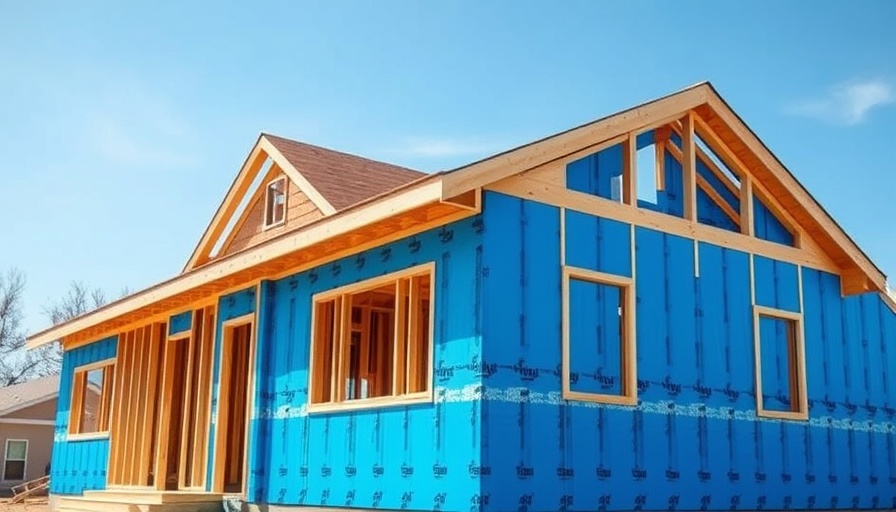
Understanding Continuous Insulation: A Key Component for Modern Construction
In today's world of sustainable building practices, continuous insulation emerges as a vital player. As homeowners and contractors alike seek performance, efficiency, and comfort, understanding the principles of continuous insulation is more crucial than ever.
The Basics of Continuous Insulation
Continuous insulation (CI) refers to an insulating layer that is unbroken, meaning it extends across all structural members without gaps like studs or beams. This strategy helps in maintaining a consistent thermal boundary, significantly reducing thermal bridging, a common issue in conventional insulation methods. By eliminating these thermal shorts, continuous insulation enhances energy efficiency, a principle that resonates deeply with homeowners pursuing sustainable living.
Why Continuous Insulation Matters for Homeowners
Homeowners looking to lower their energy bills and improve comfort may find that continuous insulation is an excellent investment. Not only does it optimize energy use, but CI also addresses potential issues like moisture buildup and mold growth, which can pose threats to both health and property. Ultimately, a well-insulated home provides a cozy sanctuary, making it an appealing prospect for prospective buyers.
Applications in Various Construction Projects
From residential properties to commercial buildings, continuous insulation is versatile enough to be employed across different types of construction. In multifamily dwellings, for instance, CI can enhance soundproofing and overall thermal performance. Programs like the IECC (International Energy Conservation Code) advocate for CI usage, mandating it for certain geographical locations based on climate zone. This is a crucial adaptation for contractors to consider when planning their projects, ensuring compliance with local energy codes while delivering increased value to their clients.
The Future of Insulation: Trends and Predictions
The insulation market is evolving. As technology advances, manufacturers are developing new CI materials that are lighter and more effective. Innovations include eco-friendly spray foam and rigid foam boards, many of which boast sustainable manufacturing processes contributing to lower environmental impact. Knowing these trends and materials can be pivotal for contractors seeking to stay ahead of the curve.
Understanding Cost vs. Value
Despite an initial higher investment, continuous insulation often proves economically advantageous over time. The energy savings accumulated from a well-insulated structure can significantly outweigh initial costs. For both homeowners and contractors, the journey toward energy efficiency is about balancing upfront expenses with long-term benefits and sustainability goals.
Common Misconceptions About Continuous Insulation
Many believe continuous insulation is just another buzzword in construction, but it's much more! One misconception is that CI is only necessary for extreme climates. In reality, CI can benefit homes in all climate zones, providing a thermal barrier that maintains indoor temperatures while reducing reliance on heating and cooling systems.
Conclusion: A Call for Sustainable Practices
As sustainability remains a priority for modern living, continuous insulation stands out as a vital component of energy-efficient construction practices. By investing in CI, homeowners not only enhance their living conditions but also contribute to a more sustainable future. For contractors, embracing this method can yield a competitive edge in a rapidly growing market.
Get ahead in the construction game; consider how continuous insulation can elevate your next project while providing lasting benefits for clients. Let’s prioritize sustainable living together!
 Add Row
Add Row  Add
Add 




Write A Comment